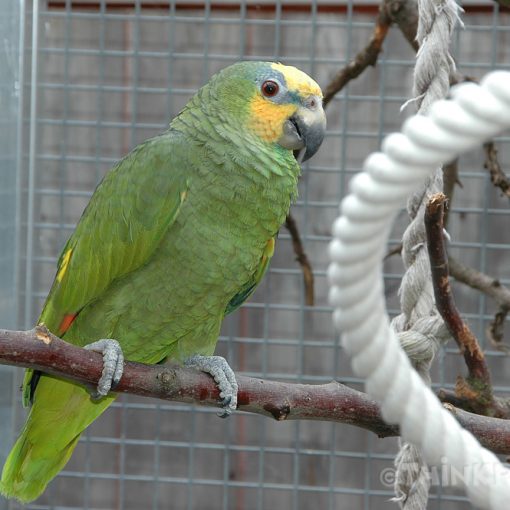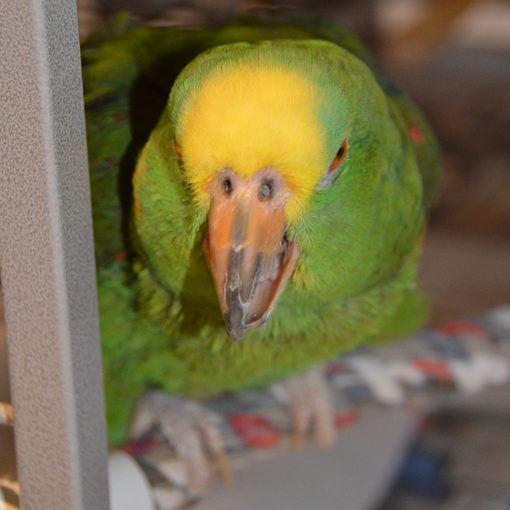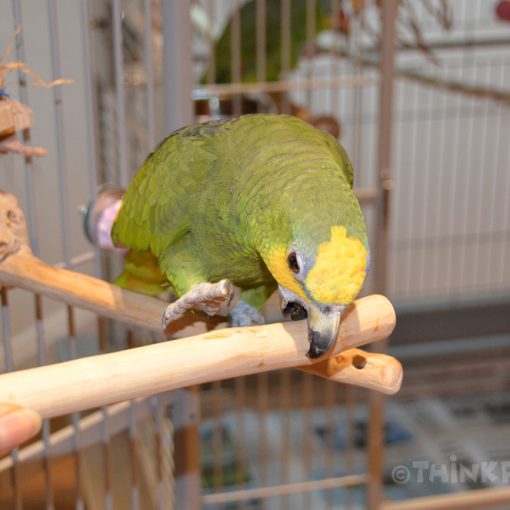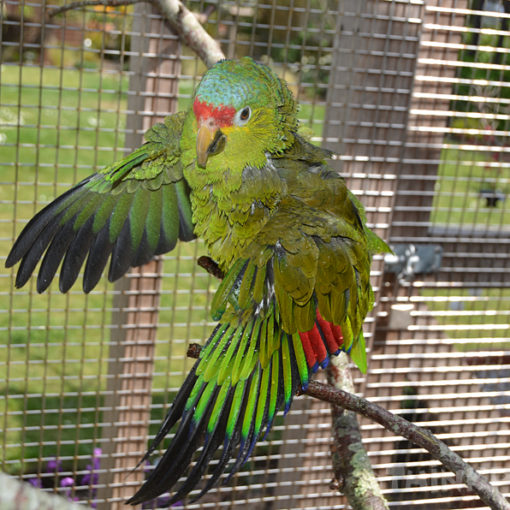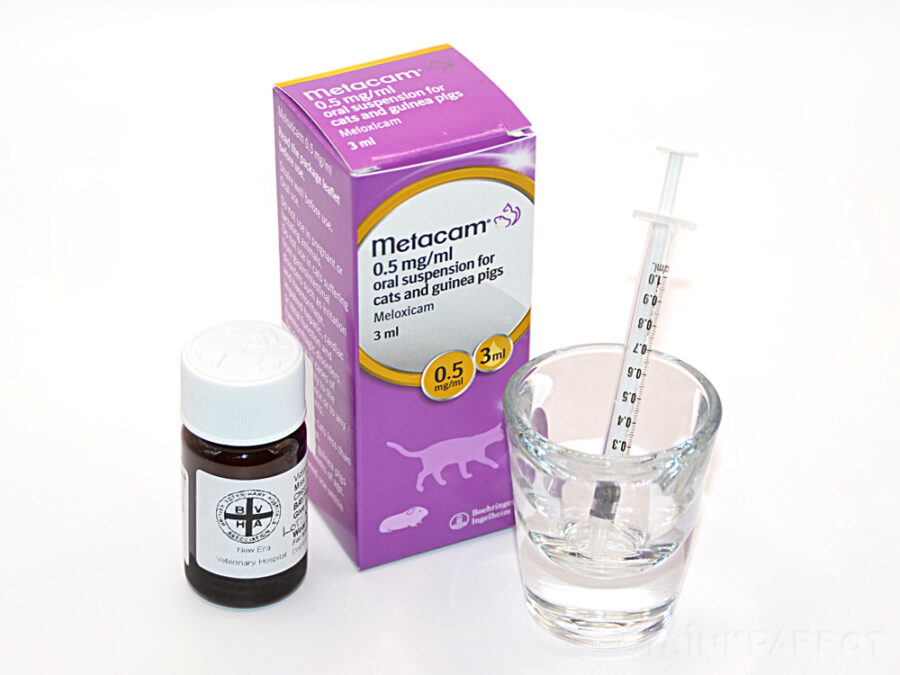
At some point you may be required to administer medication to your parrot. There are a few different ways to do this without having to catch the bird up in a towel which can be highly stressful for both of you, and may lead to loss of trust on the bird’s part.
Topics discussed are medicating force-free via syringe, small shot glass, spoon, foods and nebuliser.
Syringe
It can be extremely useful to train a parrot to take liquids straight from a syringe. Start now before your bird needs medication.
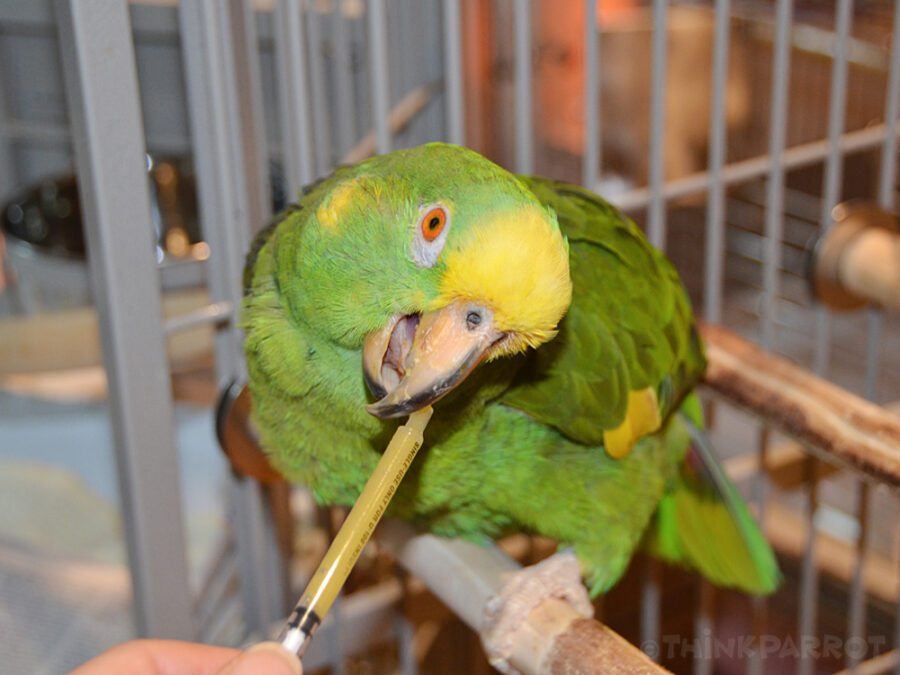
A small syringe, ie. one that takes 1ml of liquid, is big enough for any sized parrot. You may want to get a box of them, as I do, fairly cheaply from somewhere like Amazon or Ebay. Most, if not all, will say “single use only,” but they are easy to wash and reuse until they no longer plunge smoothly which is when they should be discarded and a new one opened.
How to teach a parrot to drink from a syringe
The behaviours of first touching the tip, then drinking from a syringe are shaped.
Shaping is reinforcing small, manageable steps/approximations towards the goal behaviour (in this case, the first behaviour to shape is the bird touching the tip of the syringe).
However, before you can begin shaping the behaviour, you may have to desensitize your parrot to the sight of the syringe, particularly if he/she is afraid of it.
Systematic desensitization is very gradually exposing the parrot to the syringe (or any other fear eliciting stimulus), never provoking anything stronger than a very mild response.
Show the bird the syringe from a distance and gradually get closer over a number of days. And/or maybe leave it lying around as a toy. Or play with the syringe yourself and the intrigued parrot might want to join you. As soon as you and the syringe can get comfortably close enough to the bird; ie. the parrot maintains relaxed body language, you can start shaping!
In order to shape a behaviour you will need something to reinforce (reward) each successful approximation/step. What is reinforcing for your particular bird? A favourite treat works well. If you can break that treat into tiny pieces you will get more behaviour before the bird is satiated. Other potential reinforcers might be access to a favourite toy, a head scratch or praise. Make the behaviour easy as possible – keep the syringe at beak level or just below beak level and start at a distance where the parrot’s body language is relaxed. Note: the syringe is empty at this point.
Keep training sessions very short – a few minutes here and a few minutes there is much better than one long session.
Approximations (tiny steps toward the goal behaviour) might look something similar to this:
- Parrot looks at syringe (reinforce!)
- Parrot’s body language remains relaxed as you bring the syringe closer and closer in small steps, reinforcing each step. When close enough:
- Parrot leans towards syringe (reinforce!)
- Parrot touches tip of syringe with beak (reinforce!)
You may have to back up and break some of the approximations into even smaller steps if the bird is not making progress, or you may miss some out if the bird is eager to touch the syringe from the get go. If the bird goes to bite the barrel of the syringe, great! He still gets the treat for touching it. Now shape approximations towards touching further and further up the barrel until he/she touches/bites the tip. It is similar to teaching a bird how to target, and in this case, the tip of the syringe is the target. Once the bird realises that he only has to lightly touch the tip for the treat, he will no longer bother to expend energy biting it.
Then put some water or sugar water into the syringe (these clear liquids will make sure the syringe looks exactly the same) and have the bird touch the end of the syringe with a bubble of liquid on the tip. Later when the behaviour is strong (ie. first licking the liquid on the tip, then actually drinking from the syringe) you can swap the water with some favourite juice (start with a pale coloured juice) and the taste of the juice becomes the reinforcer.
There is a high possibility that the bird will reject the syringe as soon as it contains medication (meds) despite the treat that follows. So get creative! Mix the meds with a strong flavoured juice like tart cherry or cranberry. My vet suggested pineapple juice. I’ve also successfully used mango smoothie, carrot juice and apple juice, depending on the bird. Get your parrot used to drinking different juices now!
Putting the shaping plan into action with JoeJoe
Being an inquisitive bird, I thought JoeJoe might join me in playing with the syringe, but no. So it meant systematically desensitizing him to the sight of it. I mixed up bringing it gradually nearer and then further away again, making sure his body language remained pretty relaxed throughout. As soon as I was close enough (desensitizing took about two sessions on two different days) I could begin shaping:
Day 1
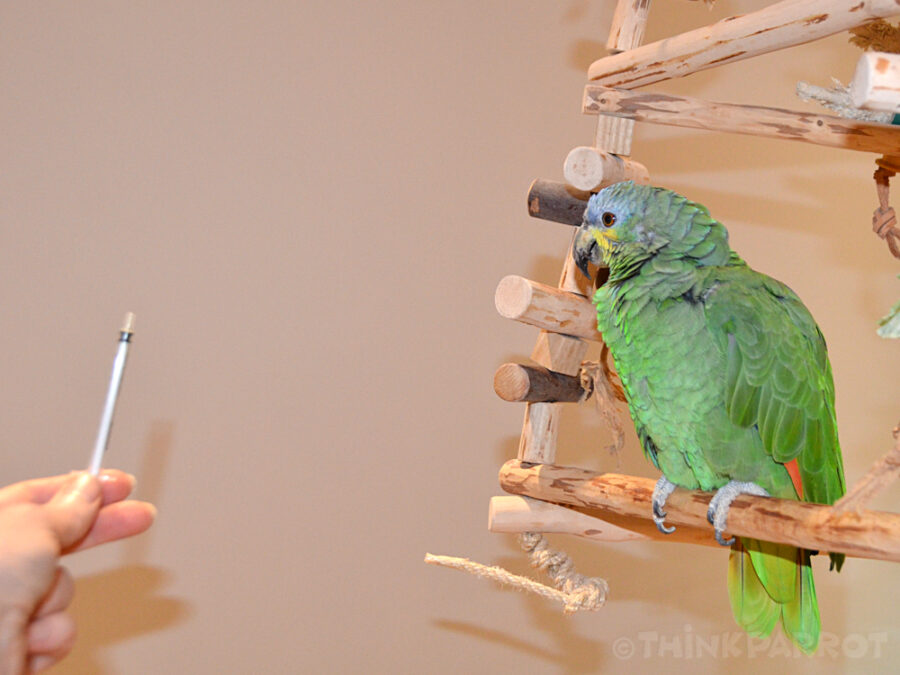
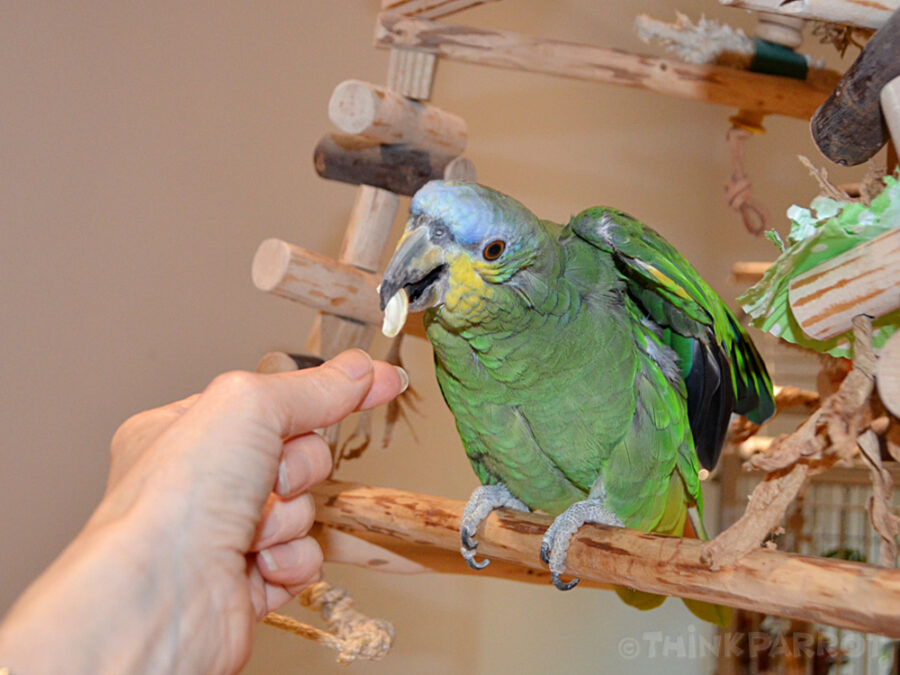
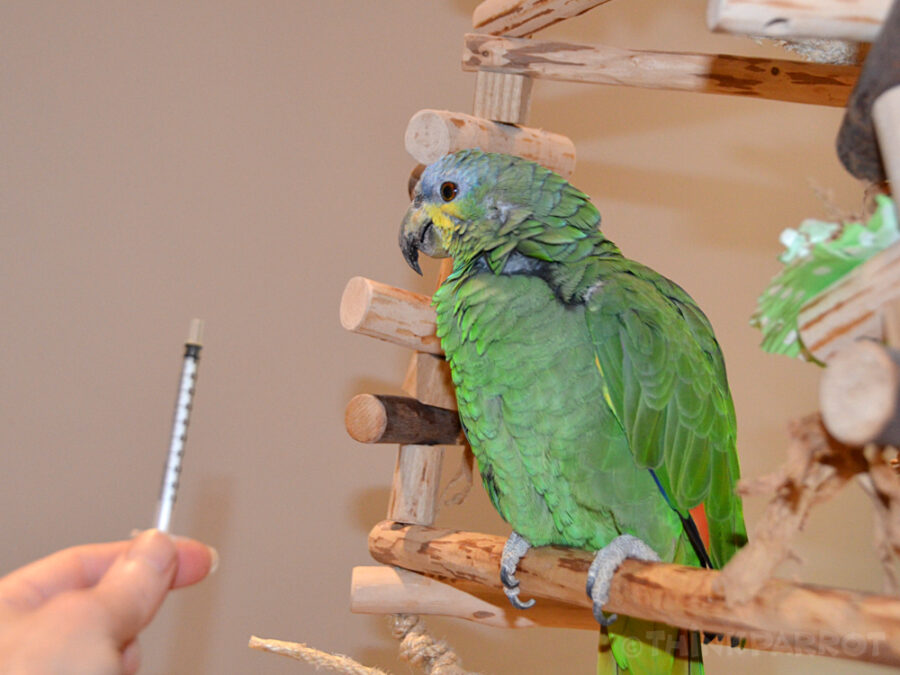
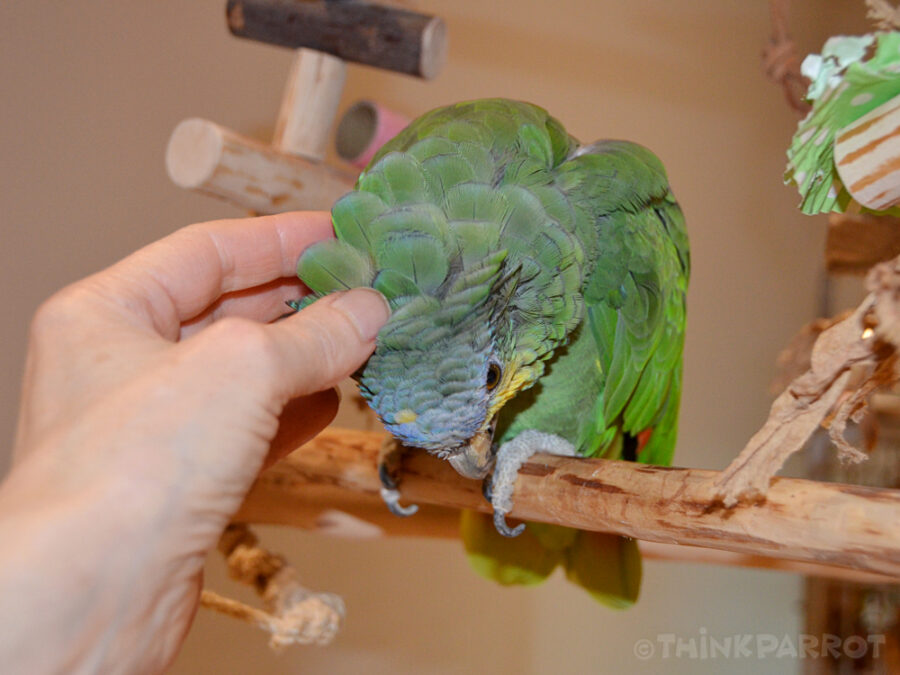
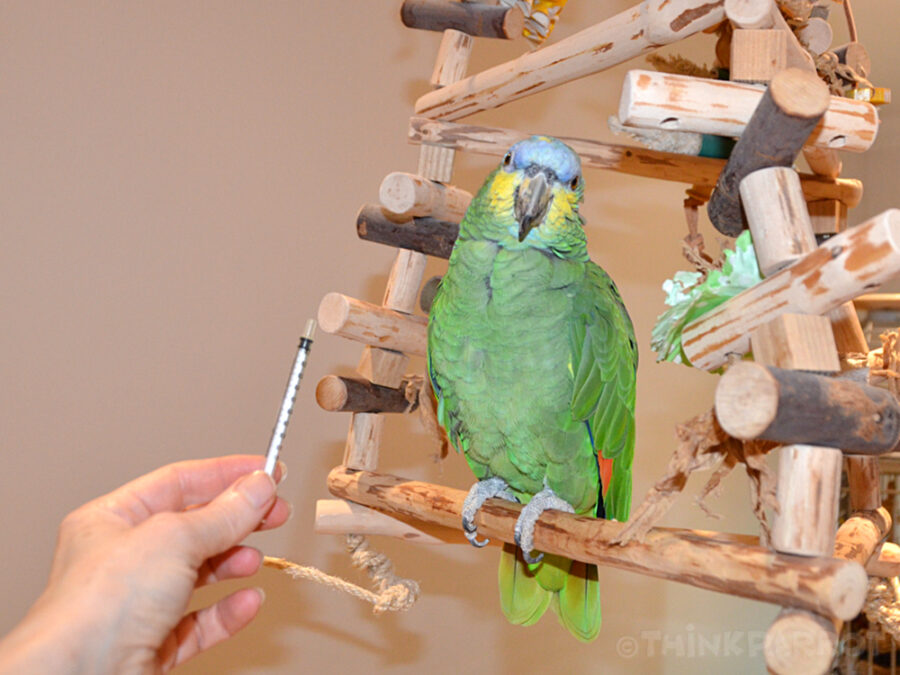
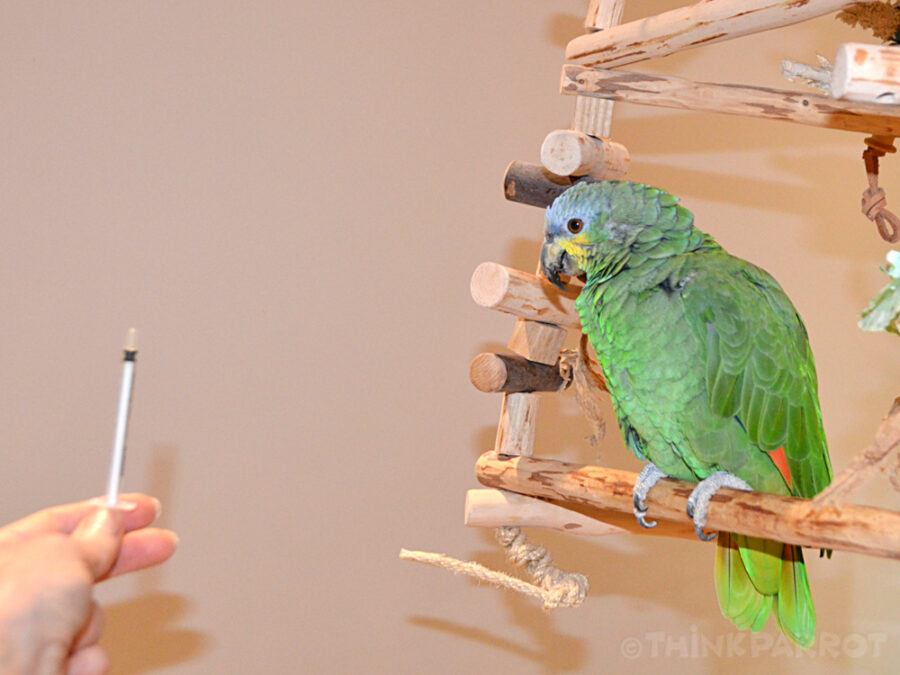
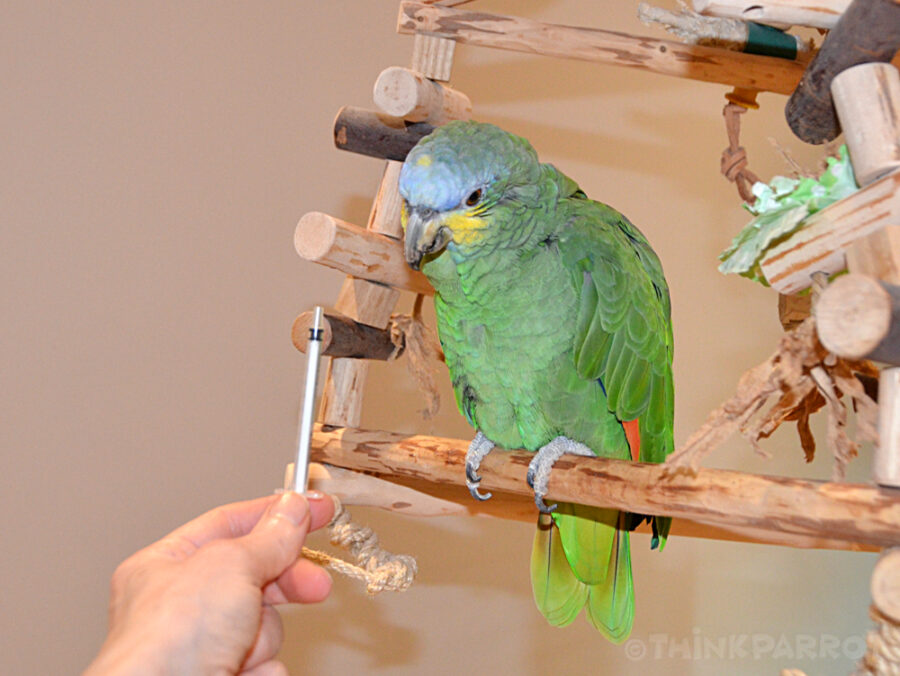
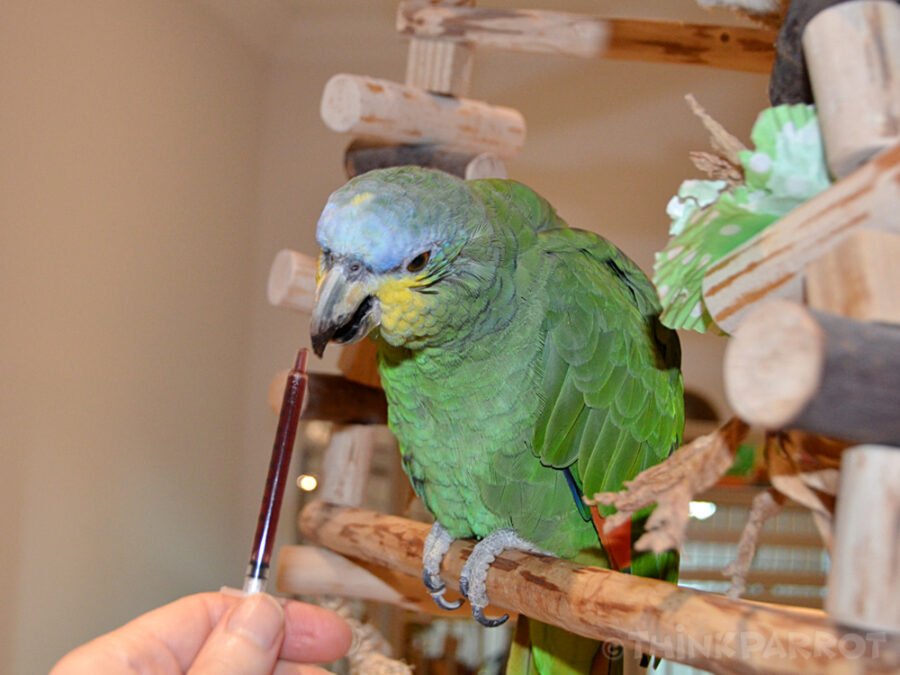
Day 2
The next evening he wasn’t interested which was fine. I realised I was going to have to start shaping from the beginning again.
Day 3
The third evening I started again – desensitizing and then shaping. We moved through much faster as expected because he had done it before on Day 1. I didn’t want to photograph our efforts in case the camera flash punished the behaviour. (Punishment in behavioural terms means to decrease a behaviour.) To keep the whole session relaxed and interesting or if I saw him slightly flagging, I asked for and reinforced other behaviours he knows between some of the approximations, like turning a circle or putting a ball in a cup. I could have ended our training session with a drink from a shot glass as usual, but I thought of motivating operations (see explanation further down) – what if I offered him juice from the syringe before offering the shot glass, whilst he was alert and slightly thirsty? Success! He actually drank from the syringe and then grabbed it and played with it! He was so enthusiastic I dared photograph it. He then got his drink from the shot glass as usual.
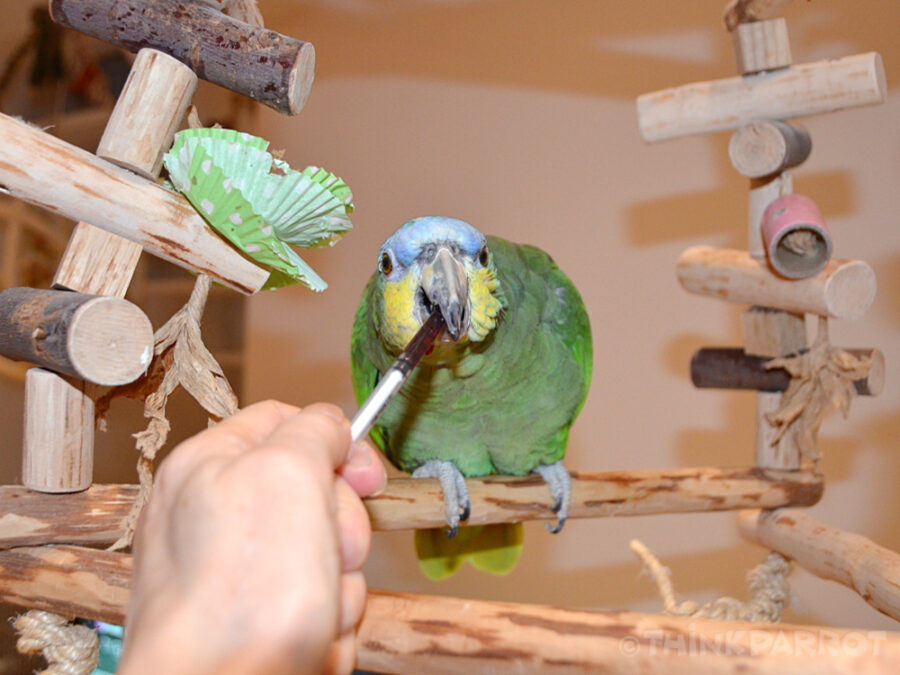
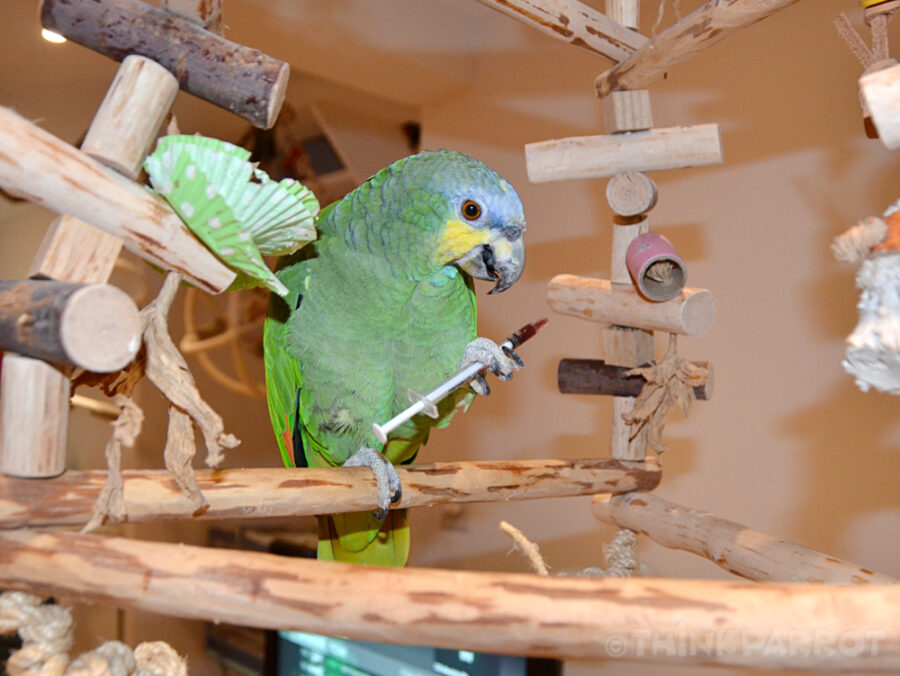
On each future session, I will start shaping again from the beginning. The more sessions we do, the fewer approximations likely needed, but I will always follow JoeJoe’s body language as to how fast we go. The goal is to get him drinking from the syringe pretty much each time it is offered. The treats, head scratches and clicker will be faded out as the taste of the juice becomes the reinforcing consequence.
Tip: Keep meds in the fridge. Reason being the molecules in cold food are less active than in warm food so the flavour is diminished/weaker.
Other ways to administer liquids
The syringe isn’t the only way. Choose a method that is easiest for you and your bird. Other ways to administer liquids could be off a spoon (try a small clear plastic spoon if your bird is afraid of a metal one) or a small amount of juice out of a tiny shot glass or even bottle cap. In desperation I’ve floated meds on top of a thick mango smoothie in a normal glass and the bird successfully drank it – this is possible if the meds don’t taste terrible. Start training/getting the bird used to drinking from spoons/shot glasses/bottle caps before you need to medicate.
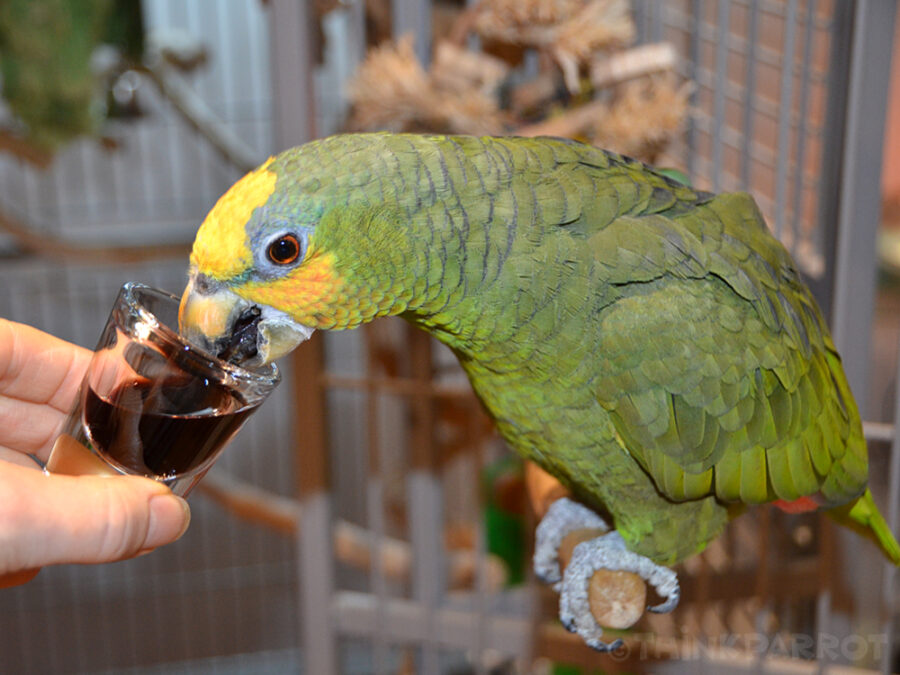
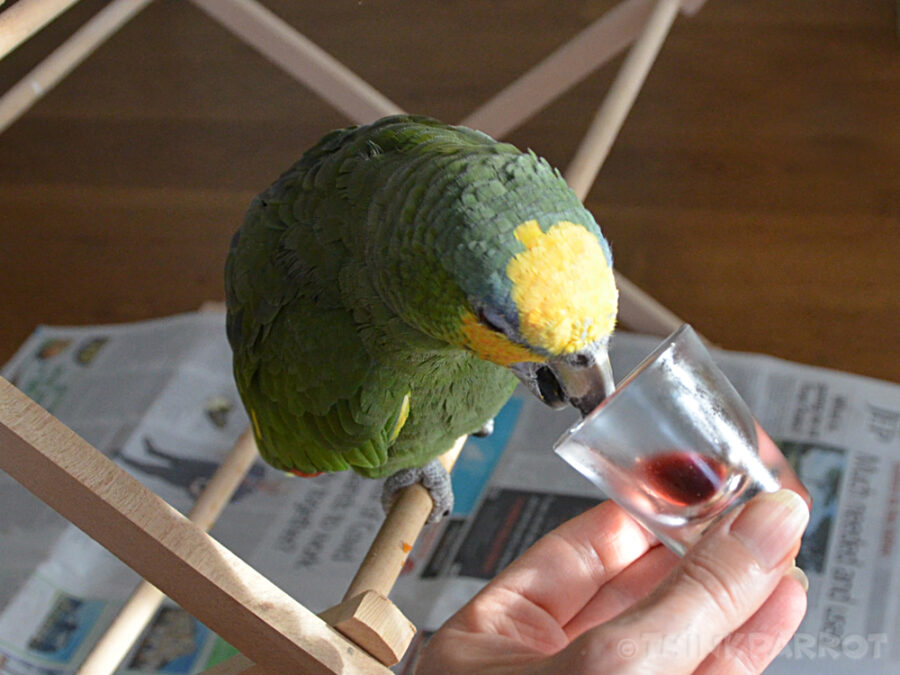
Also think about Motivating Operations – what can you do to make it more likely that the bird wants a drink when offered? For example, I offer juice immediately after a training session when the birds have been earning pieces of nut as reinforcers. They are more likely to be a touch thirsty then. I have to be quick though before they go fill up on water or fruit, but usually they wait as the taste of juice is more reinforcing. Note: please DO NOT withdraw water to make a bird thirsty. This is inhumane – a parrot should have access to fresh water 24/7.
Food
We can also get clever with food. Start now! Get your parrot used to eating things like:
• Greek yogurt (fuller fat is better at hiding meds – I use 5% fat). Because yogurt is slightly sour, it is a wonderful medium for hiding bitter tasting medications like antibiotics/Baytril. And because Greek yogurt is thick, it keeps it’s shape despite the added liquids. I put a small blob of Greek yogurt on top of a piece of fruit in the birds’ breakfast bowls every morning and sprinkle it with freshly ground flaxseed and bee pollen. Normally I use it to disguise supplements as needed, eg. vitamins, alcohol-free milk thistle tincture, etc. Chico in particular eats every bit of his yogurt so this is my chosen method to hide Baytril on the few occasions it has been prescribed for him.
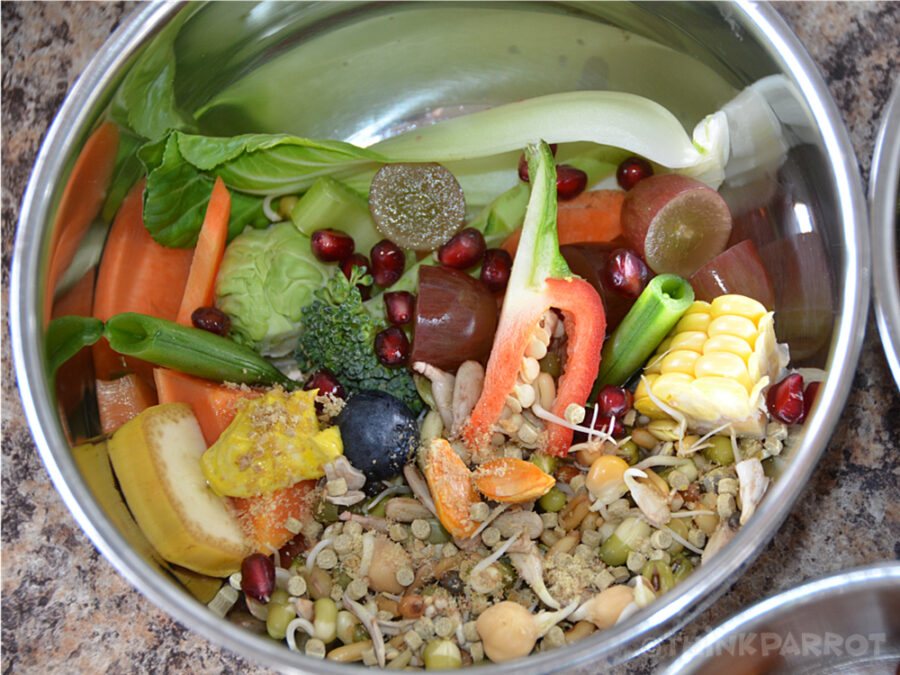
• Greek yogurt mashed with a tiny bit of cottage cheese and spread on a triangle of toast. Another effective way to administer Baytril/antibiotics. This is how Chico will eat his second dose of antibiotics in the evening.
• Warm oatmeal or instant baby oatmeal (make sure it is iron free) made up with water or ‘oat milk’. I used to hide all sorts of meds and supplements in instant baby oatmeal for Ollie.
• Baby parrot formula or Harrisons Recovery Formula (for sick birds).
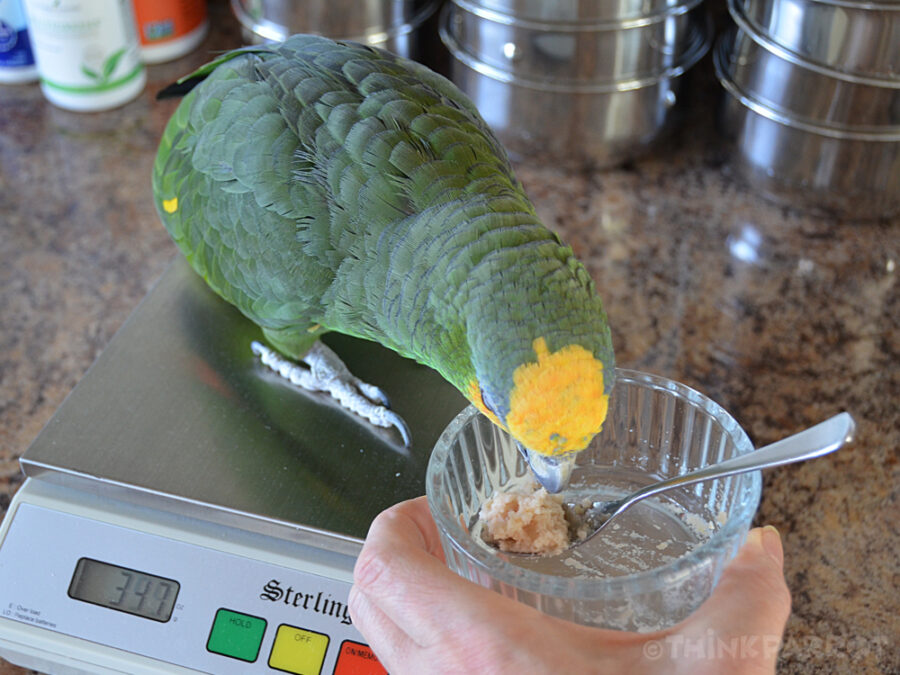
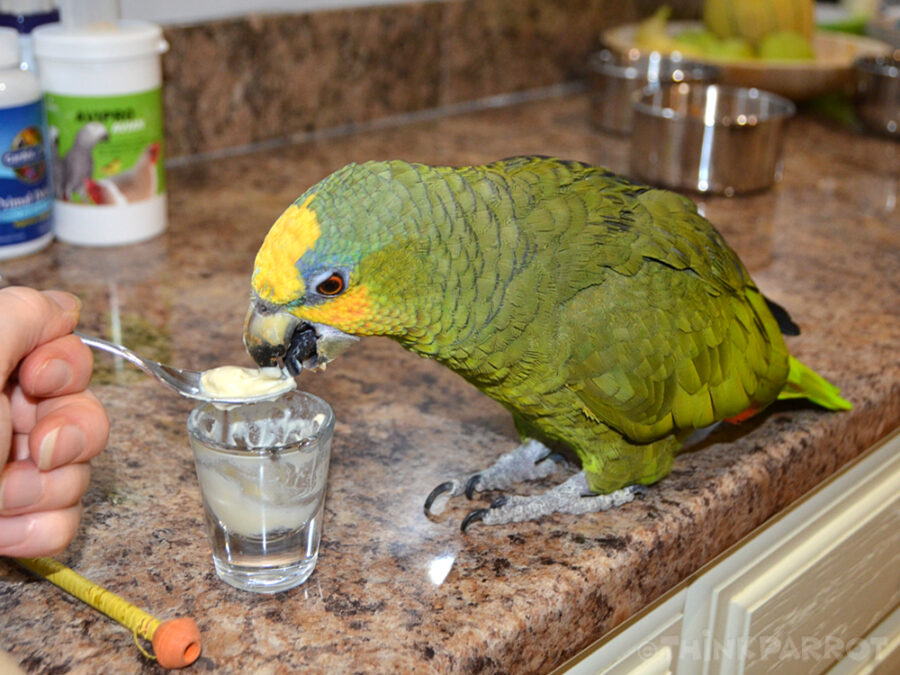
• Almond or peanut butter spread on a square of toast or bread or a piece of low salt cracker.
• Warm, mushy food – this includes warmed baby food, mashed sweet or normal potato or squash, or even a mash of legumes and grains.
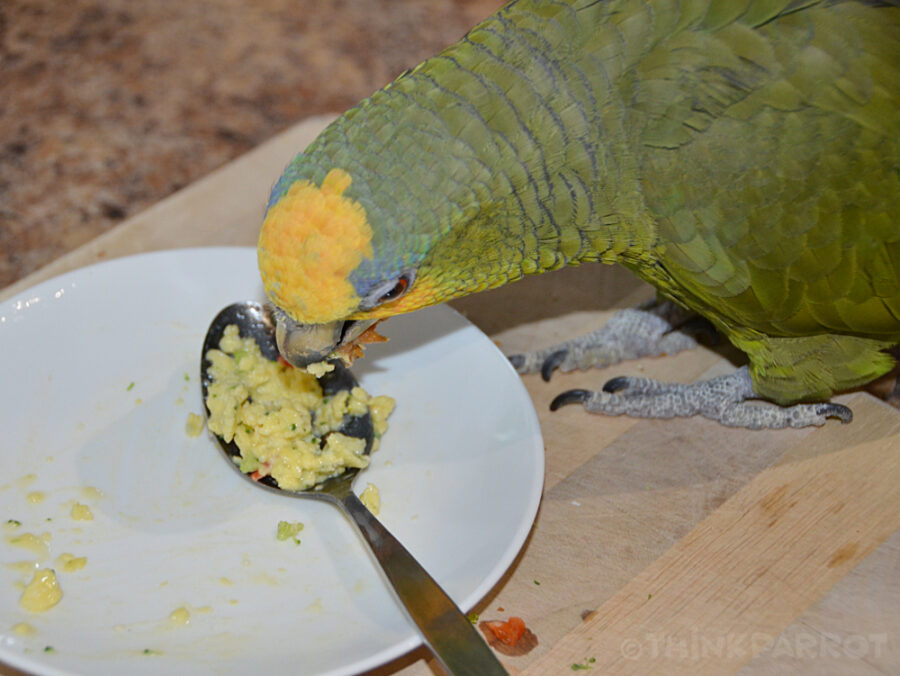
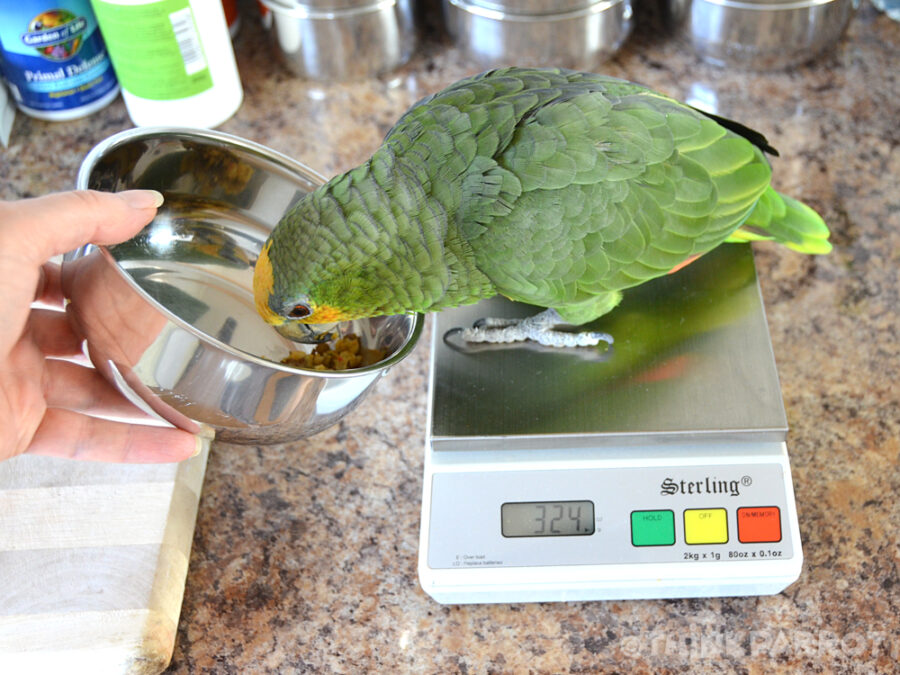
• Apple sauce is another popular medium.
• Lay meds on top of something juicy that you know the bird loves, like orange pieces. I used to do this with anti-fungals for Ollie as I knew he would suck the orange pieces dry. Anti-fungals don’t taste bad at all so this was a very effective method.
• Inject grapes or berries, like blueberries and cranberries, that you know will be completely eaten. If I had to medicate Kobe this would be how I would do it as he consumes every bit of a half grape.
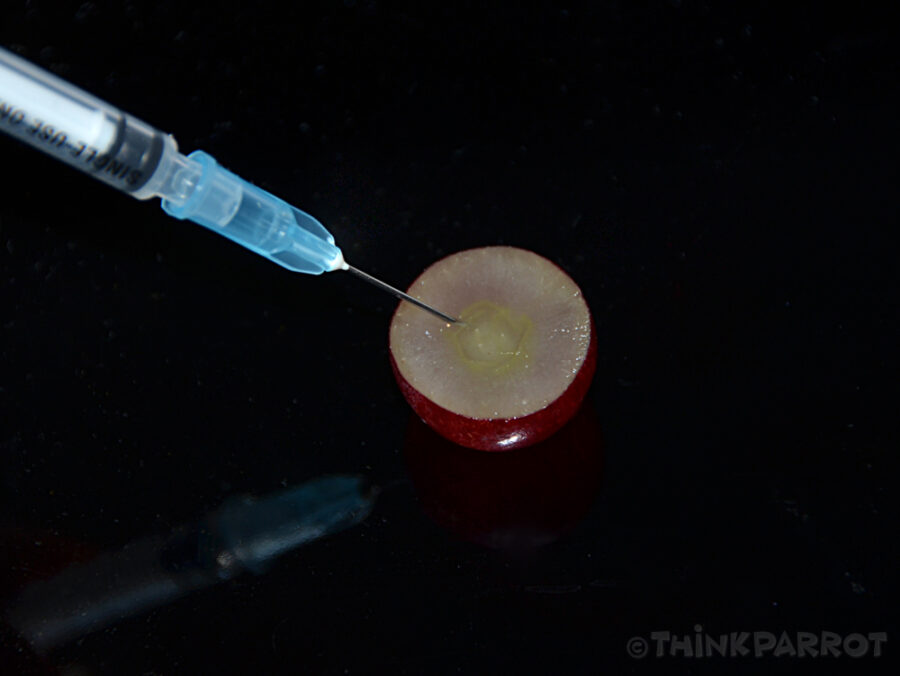
Since antibiotics kill not only the bad bacteria, but also the good, remember to give your bird probiotics after a course of antibiotics to help repopulate the good intestinal bacteria.
Nebuliser
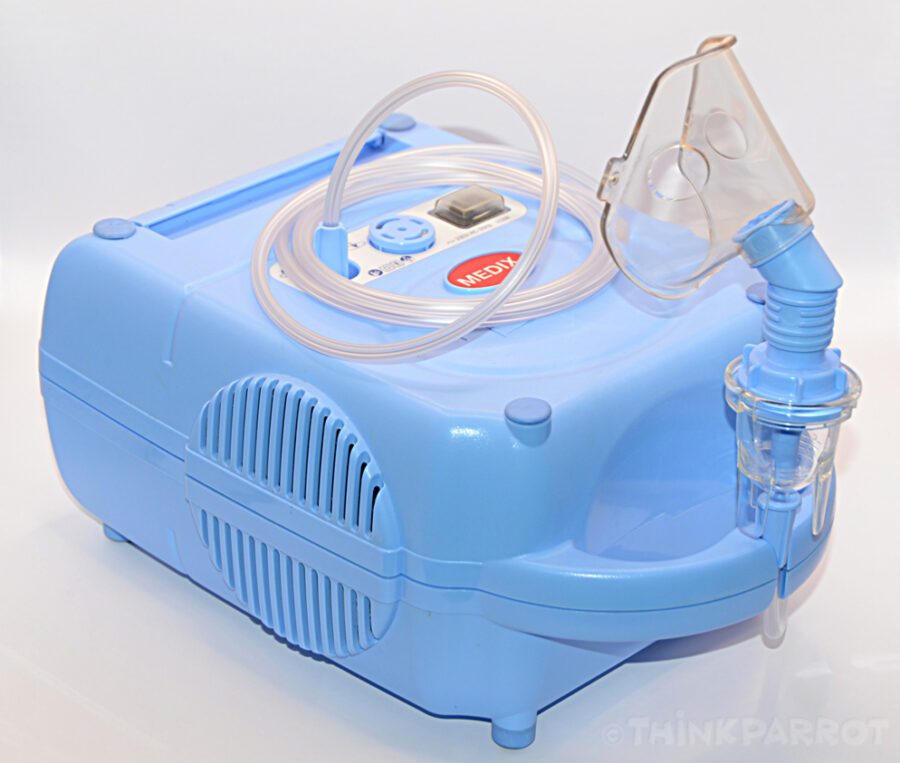
Some medications like antifungals are more effective when administered orally, as I was once told by an avian vet. Others, like F10 disinfectant and some antibiotics, depending on what is being targeted, can be administered as vapour via a nebuliser. However, medications that have been made up with syrup cannot be nebulised, they need to be made up with water. Your avian vet will tell you if this is a viable option for your particular bird and if so will work out the dosage accordingly. For a bird that is difficult to medicate, it might be something to look into. I have nebulised Baytril (our avian vet made it up with water) for Ollie many years ago for a respiratory condition.
If possible, choose a nebuliser with a smaller particle size to treat a lower respiratory tract disease in humans. For therapeutic purposes the particle size should be 0.5 – 10 µm, with at least 60% between 1 – 5 µm. Particles smaller than 3 µm are less able to carry medication.
As an example, this nebuliser looks to meet the requirements: https://www.mah-shop.co.uk/pari-compact2-nebuliser-1198-p.asp
The best container to put your bird into to be nebulised is something enclosed like a plastic container with a lid. It should be comfortably big enough to fit a perch inside as well as the bird, plus a few toys. The nebuliser mouth piece is poked through a small hole cut into the side of the container and taped into position. A perch can be fixed near the bottom of the container.
Another option is a small cage, like a travel cage. It would have to be covered with sheets or towels to keep the vapor inside.
Two different vets suggested nebulising a bird in his normal cage as long as the cage is well covered and the bird is able to sit near the vapour. Just fix the nebuliser mask to the cage bars near to the bird. I nebulised Ollie like this nightly when all the parrots get covered anyway and pointed the vapour at his roosting perch. I’d leave the nebuliser running for approximately 20 – 25 minutes after which I would turn it off, dismantle it, and make a normal gap in the covers for air for the rest of the night. Ollie would sit right next to the mask throughout the process. I found that was the least intrusive and therefore stress free way to nebulise him.
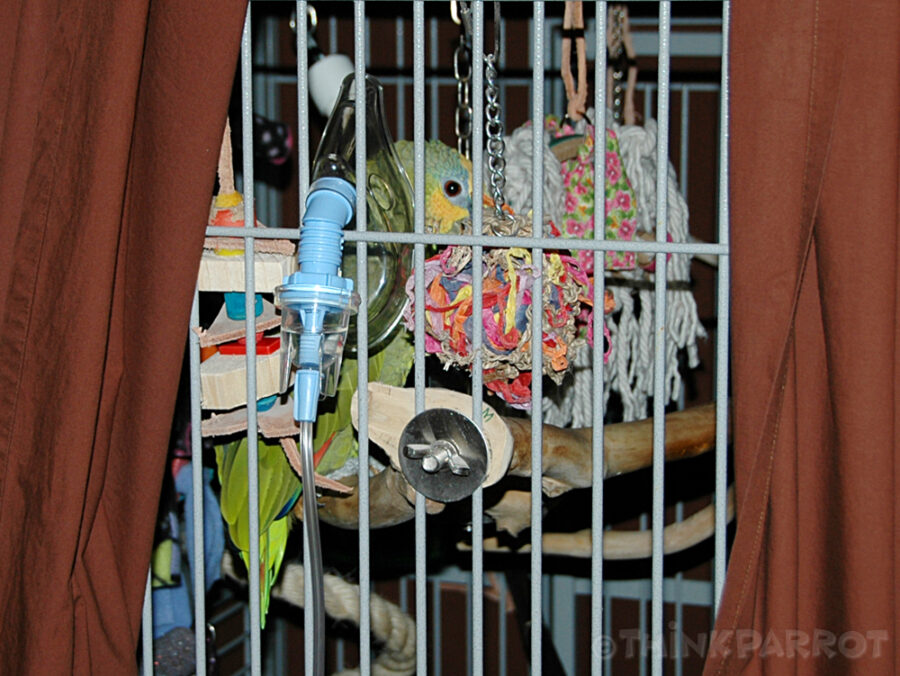
When nebulising with F10, make sure it is the clear F10 SC (Super Concentrate) and NOT the green F10 SCXD which has added detergent. For nebulising parrots, the usual ratio of F10 SC to distilled water is 1:250 (double check with your vet). This translates as 2ml F10 SC in 500ml distilled water. This can be kept in a labelled glass bottle in a cool cupboard for a few months.
Hopefully there are some ideas above which make administering meds stress free for both you and your parrot!
If you have to catch the bird up in a towel to medicate, this is a great informative video by a certified avian vet:

